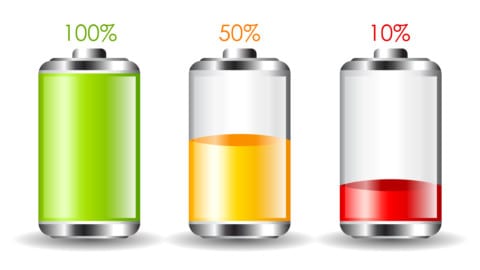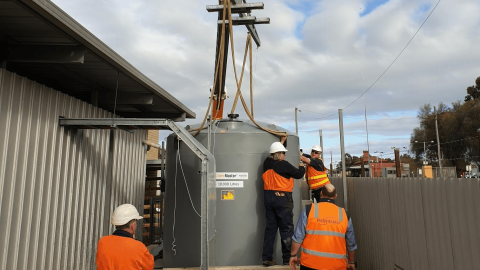Stormwater is rainwater that runs off impervious or saturated surfaces in the urban environment, such as roofs, roads and pavements, and green spaces. In an undeveloped environment, natural vegetation allows for rainwater to infiltrate soils, allowing for transpiration by vegetation and evaporation into the atmosphere. The concrete jungles of Australia’s cities generate enormous volumes of stormwater, which has significant environmental consequences for the waterways that receive it. Stormwater harvesting can also help save hundreds of millions of litres of drinking water each year by providing an alternative water supply and play an essential role in the development of thriving green spaces for community use.
Stormwater can carry pollutants including litter, soil, organic matter, grease, oil and metals collected from roads and properties, and fertilisers from gardens, with stormwater run-off cited as the primary cause of urban waterway degradation.
In addition to negatively impacting stream ecosystem health, altered flow regimes and poor water quality as a result of stormwater run-off can render urban waterway restoration efforts largely ineffective. It’s also important to note that when excess water falls on impervious surfaces, it runs rapidly rather than soaking gradually into the earth. This can cause flooding, erosion and infrastructure damage if not managed properly.
While stormwater clearly harms the environment, it is also a resource that is not being utilised to its full potential. Stormwater has a range of non-potable applications in urban environments, including toilet flushing, garden watering, car washing, industrial uses, open space irrigation, ornamental water features, fire fighting, environmental flow provision and groundwater recharge.
With appropriate treatment, stormwater can also provide a supplementary potable water supply; however, there are a number of barriers that significantly limit the potable use of stormwater in Australia and overseas, the most important being:
• Limited understanding of the hazards of utilising urban stormwater as an alternate water source. In particular, there are very few datasets that have quantified the levels of pathogens and chemicals of concern to human health in stormwater
• Minimal knowledge on pathogen and chemical removal in low-energy and affordable stormwater treatment systems that are based on the principles of water sensitive urban design
• Non-existent validation procedures for these types of stormwater treatment systems
The traditional model of stormwater management aims to drain urban run-off as quickly as possible with the help of channels and pipes, which only increases peak flows and the costs of stormwater management. New technologies for stormwater management have been in existence since the 1970s and include detention and retention basins, permeable surfaces, infiltration trenches, surface and subsurface groundwater recharge, and other control measures.
A number of utilities and councils are trialling innovative technologies and adopting local stormwater management projects, which offer the opportunity to improve the health of the surrounding waterways while providing secondary benefits to communities, such as increasing water security and reducing peak summer temperatures.
Restoring urban waterways to full health
Melbourne Water is one utility working with stakeholders and the community to minimise the negative impacts of stormwater and improve the habitat, ecology and amenity of local waterways.
Dandenong Creek is one example, with long-term investigations showing that the primary stressor on the creek’s health was pollution from nearby industrial areas and residential stormwater run-off.
Rather than undertake a conventional sewer upgrade to manage the risk of overflows into the creek, Melbourne Water worked with the EPA to investigate alternative ways to improve water quality and deliver measurable on-ground benefits.
The Enhancing Our Dandenong Creek project was designed to improve amenity and liveability, reduce stormwater pollution, create habitats for native fish, and manage the impact of non-compliant wet weather sewage outflows into the creek.
The pilot program identified the real opportunities to establish programs, new monitoring technologies and a way of working together that over time, will ultimately improve water quality, and protect ecosystem health and public health and safety.
The pilot project ran from 2013 to 2018, and saw $15 million invested over five years in significant works, including:
• Revitalising 12 billabongs and wetlands along the creek corridor
• Removing 830m of drainage pipe to ‘daylight’ and naturalise the creek
• Planting more than 69,000 plants in billabongs, wetlands and the naturalised section of the creek
• Conducting live pollution monitoring at 32 sites with data loggers
• Constructing 20 fish habitats, including breeding areas
• A fish stocking program and reintroduction of two threatened fish species
Now in its second phase, the project demonstrates an innovative and collaborative approach to meeting sewage containment obligations – creating an opportunity to do things differently and achieve greater outcomes for the community.
This commitment to working with the community was recognised at the 2019 Stormwater Victoria awards, with the water provider a joint winner of the Excellence in Research and Innovation category for the Enhancing Our Dandenong Creek project.
The Stormwater Victoria honour capped off a series of accolades for the project, which also won two national Australian Water Association awards in 2019.
Melbourne Water also claimed the 2019 Stormwater Victoria award for Excellence in Strategic and Master Planning for the Chain of Ponds Collaboration – Transforming the Moonee Ponds Creek Through Collective Action – a project that is breaking new ground in how Melbourne Water delivers waterway management.
The Moonee Ponds Creek catchment is one of Melbourne’s most urbanised and modified creek systems. Significant issues persist across the catchment, including poor water quality, introduced species, habitat fragmentation, minimal expansion of the creek corridor through land acquisition, limited linkages to other open spaces, poor stormwater management, litter, restricted public access and movement, poor urban design outcomes, and fragmented management and decision-making.
Rather than sole organisations trying to implement another plan for a creek, this collaboration has established a new partnership model between organisations and community to drive change in a catchment which supports a healthier waterway.
In October 2018, a historic agreement to help transform the Moonee Ponds Creek was signed by 15 organisations to commit to the Chain of Ponds Collaboration and work together in finding lasting solutions for the catchment, which will transform the Moonee Ponds Creek into an iconic waterway for Melbourne that provides high social and environmental benefits.
The organisations who signed the Memorandum of Understanding include the City of Melbourne, City of Moonee Valley, Hume City Council, Moreland City Council, ity West Water, Yarra Valley Water, the Victorian Planning Authority, Parks Victoria, Conservation Volunteers Australia, Kensington Association Living Colour Studio, Moonee Valley Bicycle User Group, Friends of Moonee Ponds Creek and Friends of Upper Moonee Ponds Creek.
The project recognises opportunities within the broader creek catchment (offline) and those which operate more directly on water within the creek itself (online). Offline initiatives operate on stormwater within the broader creek catchment which can have an impact on the health and operation of the creek.
Strategies to manage stormwater runoff and quality prior to the water entering the creek itself include:
• Catchment Scale – through water harvesting and wetland opportunities
• Street Scale – canopy trees, permeable surfaces and raingardens
• Lot Scale – water tanks and permeable surfaces Online initiatives manage water quality and flows once the water has entered the creek. These ideas operate directly on the physical form and function of the creek itself and include:
• Flow control and water aeration – through weirs, rifle choke points and channel materials
• Creek profile – through terracing, benching utilising different materials for increased community connection and ecology outcomes
• Landform – utilising adjacent landform in order to detain water before it enters the creek, to recharge water tables, improve soil condition and provide landscape opportunities to increase social connection and habitat value of the landscape
While individual options can be pursued in isolation, the potential for significant improvements in creek health is only achieved when multiple options across both the catchment (offline) and the creek (online) are considered in unison.
Stormwater harvesting: turning a negative into a positive
The collection, treatment, storage and use of stormwater is referred to as stormwater harvesting. The regional city of Orange – located approximately 260km west of Sydney in the Central West of New South Wales – has been able to demonstrate that despite the lack of existing regulation or guidance, stormwater can be harvested and used safely for potable supplies.
Water supply in Orange was provided by two water storages which captured runoff from predominantly rural catchments.
While Orange has a relatively high annual rainfall compared to surrounding areas, its location at the top of the catchment limits the volume of water that can be captured.
By late 2007, the city’s water storages were below 40 per cent and significant resources were directed to reduce water consumption. By August 2008, the combined water storage level reached 26.7 per cent and dropped to its lowest level of 23 per cent in May 2010.
It was therefore critical that alternative water supplies were identified and used to augment the city’s water supply. Piped stormwater flows from over half of the Orange City urban area originally drained to Blackmans Swamp Creek downstream of Suma Park Dam, with the remaining urban areas draining to Ploughmans Creek.
A detailed hydrological model showed that 15 to 30 per cent of the city’s annual water needs could potentially be gained through stormwater harvesting from Blackmans Swamp Creek.
The Blackmans Swamp Creek stormwater harvesting solution was also economically viable due to:
• The close proximity of Blackmans Creek Swamp to Suma Park Dam
• The availability of key infrastructure including road access, power and an existing pipeline between the creek and Suma Park Dam
• The very high level of treatment provided by Council’s water treatment plant which already treats the raw water from Suma Park Dam including the use of ozone treatment and biologically activated carbon filtration
• The regularity of flows in Blackmans Swamp Creek (average of 53 rainfall events a year which can be harvested)
 The Blackmans Swamp Creek stormwater harvesting scheme involves some catchment pretreatment – via two large Gross Pollutant Traps – before flows are harvested from the rock and gabion weir and transferred to a 230ML holding dam.
The Blackmans Swamp Creek stormwater harvesting scheme involves some catchment pretreatment – via two large Gross Pollutant Traps – before flows are harvested from the rock and gabion weir and transferred to a 230ML holding dam.
The stormwater is then treated in batch ponds to meet target water quality criteria before being piped into Suma Park Dam to be treated with the other stored water for potable supply. Following the success of the Blackmans Swamp Creek stormwater harvesting scheme it was expanded to include the Ploughmans Creek stormwater harvesting project.
This project involved the retrofit of four stormwater treatment wetlands into existing urban areas before flows are harvested and transferred to the holding dam already used for the Blackmans Swamp Creek stormwater harvesting scheme.
The combined average harvesting potential of both of these projects is 1,350ML/year with 850ML provided by Blackmans Swamp Creek and up to 500ML provided by Ploughmans Creek. This equates to approximately 25 per cent of Orange’s annual unrestricted water demand.
The Blackmans Swamp Creek and Ploughmans Creek stormwater harvesting to potable schemes received permanent approval in April 2015, almost seven years after the Blackmans Swamp Creek stormwater harvesting scheme was first approved under emergency authorisation.
Since the construction of the Blackmans Swamp Creek and Ploughmans Creek stormwater harvesting schemes, the council has also been investigating the best use of its stormwater through the use of a dual pipe plumbing system.
Dual pipe systems are becoming more common in new residential developments across Australia to reduce the consumption of drinking water and make the most of all water sources.
The dual pipe systems have been included in all houses built in the Ploughmans Valley and North Orange area since 2005 and since December 2017, have been allowing residents to use stormwater collected from the city’s wetlands and stormwater harvesting schemes to irrigate their gardens and flush their toilets.
As part of its Integrated Water Management program, City West Water [now Greater Western Water] is also working with its customers and community to develop impactful projects that promote sustainable water management and reduce demand on drinking water supplies.
Owned by the Victorian Government, City West Water provides drinking water, trade waste and recycled water services to Melbourne’s CBD, inner and western suburbs.
During 2018, the utility launched round one of its Stormwater Harvesting Partnering Fund. City West Water co-funded several projects during this round which included:
• Melbourne Olympic Park, Melbourne
• Woodlands Park, Essendon
• Balmoral Park, Derrimut
• Melbourne Ballpark, Altona
• Arndell Park, Truganina
• Edinburgh Gardens, Fitzroy
These projects will supply up to 108 million litres of stormwater per year for irrigation of sports grounds and public open spaces.
In October 2020, City West Water launched round twoMof its Stormwater Harvesting Partnering Fund, kicking off with the Dempster Park Stormwater Harvesting Scheme in Sunshine North.
This project will save an additional 11 million litres of drinking water by capturing, treating and reusing stormwater to irrigate Dempster Park and surrounds.
In December 2020, City West Water’s Stormwater Harvesting Partnering Fund won top honours in the government category at the Premier’s Sustainability Awards – Victoria’s most highly recognised annual sustainability awards program.
The award recognised the utility’s work with project partners and the community to deliver innovative stormwater harvesting initiatives that increase green spaces across Melbourne’s west while future-proofing water supply.
By increasing accessibility to stormwater for public open spaces, greening the urban environment and improving liveability, City West Water’s stormwater harvesting initiative offers a holistic approach to urban greening.
The program reduced water bills for customers by $26,000/year, provided alternative water for irrigation, improved waterway health and vegetation, and minimised flooding and erosion impact on the sites and further downstream.
The program also established guidelines – that can act as a blueprint for future infrastructure – to encourage the introduction of innovative products including modular storage chambers and compact pumping kiosks. City West Water additionally set up a delivery model that can be adopted by other water utilities seeking to partner with local governments in their service area.
In September 2018, the largest urban stormwater recycling scheme in Australia was switched on in Sydney’s newest town centre, Green Square. Up to 320 million litres of polluted stormwater will be diverted from waterways each year as part of the $8 million scheme.
The stormwater will be treated and piped directly into residential, commercial and community buildings. Up to 900,000L of treated stormwater will be provided daily for use in washing machines, to flush toilets, and in parks and gardens.
Positioned above a major stormwater flow path, the Green Square town centre is an ideal location for a recycled stormwater scheme.
Stormwater is harvested from the 2km drain that runs underground from Epsom Road in Zetland to Alexandra Canal and pumped into a treatment plant at the former South Sydney Hospital site on Joynton Avenue.
The water is then treated by a combination of high-tech ‘ultrafiltration’, which removes solids and pathogens, and ‘reverse osmosis’, which reduces its salt concentration, before being sent to two 500,000L undergroundstorage tanks.
From there, the recycled water is distributed around the town centre via a network of purpose-built purple pipes. Existing residential and city-owned buildings are already connected to the scheme, and new buildings throughout the area will be connected as they are completed.
Sydney Water, in partnership with leading architects, engineers and urban designers, is testing an innovative new approach that integrates urban design, planning and sustainable stormwater management, with the aim of holding as much water within the urban footprint as possible.
The Western Parkland City, the biggest and most ambitious city build project in Australian history, will be a future-focused smart city built from the ground up.
With 1.5 million people expected to move west of Parramatta by 2056, the Parkland City is set to become an economic powerhouse, a hub that integrates industry with community. The unique characteristics of Wianamatta-South Creek and its waterways makes them vulnerable to the impact of urbanisation.
Excess stormwater is a key challenge for urban planning in this environment, with development and urbanisation expected to increase the volume of run-off reaching the waterways by up to six times.
Adopting the traditional approach of draining excess stormwater from the urban environment as quickly as possible in the Parkland City would be problematic, leading to the degradation and decline of the Wianamatta waterway systems.
The approach trialled by Sydney Water and its team of experts will hold enough stormwater within the urban environment, ensuring the sustainability of WianamattaSouth Creek as the catchment is urbanised.
Cooling actions such as permeable surfaces that allow for natural infiltration of water; using tanks, wetlands and green roofs for holding and treating water; and larger scale stormwater harvesting schemes built into the precinct will repurpose large volumes of rainwater and stormwater for irrigation, water in the landscape or agricultural uses.
An abundance of street trees will create a natural canopy in the Parkland City. A ‘Wianamatta street tree’, designed specifically for Western Sydney, will be passively irrigated through the street stormwater drainage system, capturing and reusing stormwater and contributing to the health and longevity of street trees under hot, dry conditions.
Modelling of these cooling actions shows the number of extreme, very strong and strong heat-stress days per summer decreases dramatically from 47 to 19 days.
As the examples above illustrate, it is possible to set – and achieve – ambitious sustainability goals in major urban developments. Becoming a water-sensitive city is a win-win for the community and the environment, and effective stormwater management can improve public health and wellbeing, increase liveability, create greener open spaces, boost biodiversity and secure water supplies.















